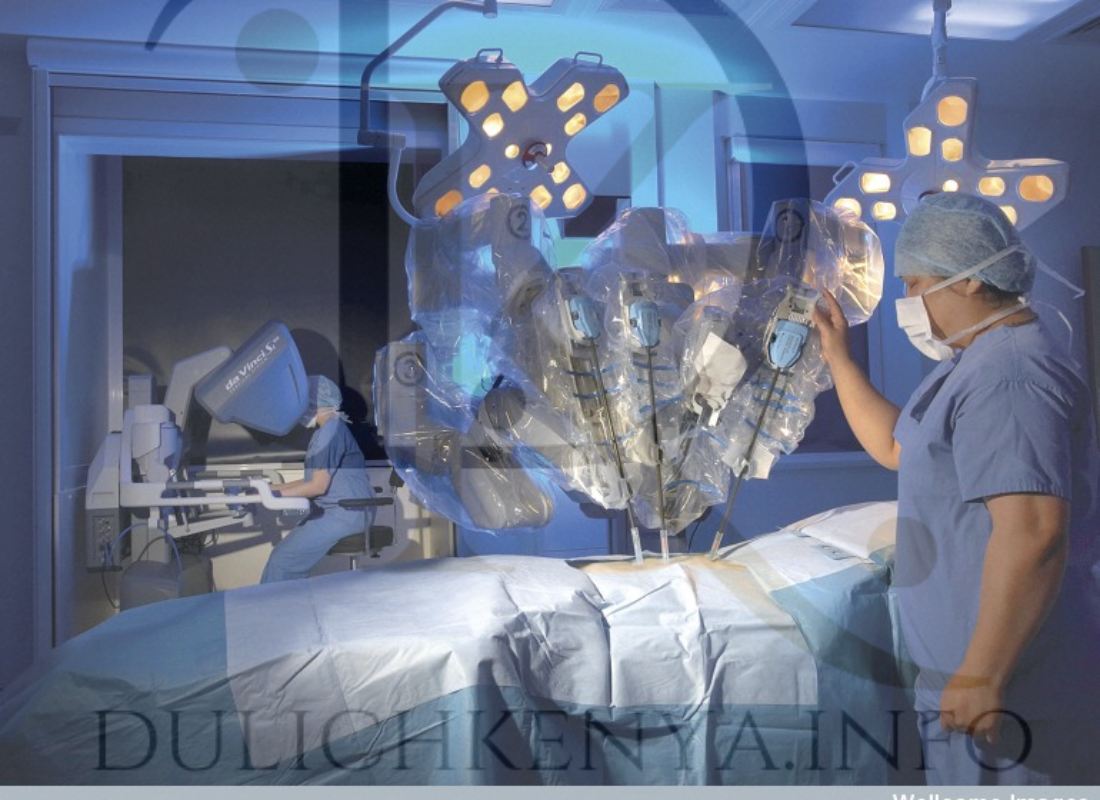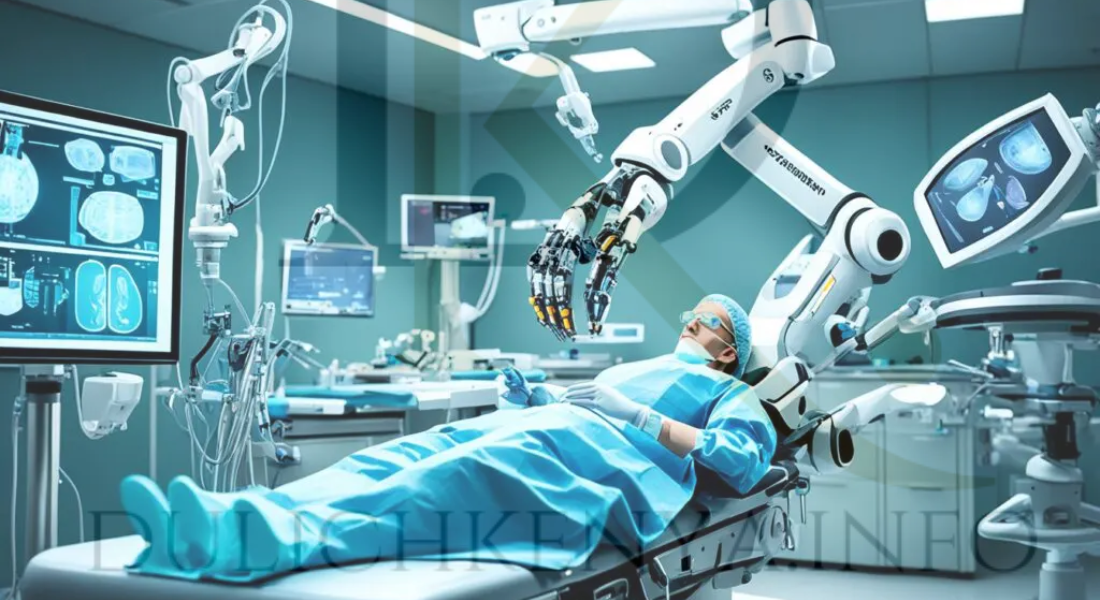Da Vinci robotic technology is revolutionizing the field of surgery, offering unparalleled precision, innovation, and efficiency in medical procedures. Developed by Intuitive Surgical, this state-of-the-art robotic-assisted surgical system empowers surgeons to perform minimally invasive procedures with enhanced accuracy and control. By bridging the gap between human expertise and advanced technology, Da Vinci robotic systems are transforming healthcare and improving patient outcomes worldwide.
In this article, we’ll explore how Da Vinci robotic technology is reshaping surgery, its key features, benefits for patients and surgeons, and the wide range of applications across various medical specialties. Additionally, we’ll discuss the future of robotic-assisted surgery and the impact of Da Vinci systems on the healthcare industry.
What is Da Vinci Robotic Technology?
Da Vinci robotic technology is a robotic-assisted surgical platform designed to enhance the precision and effectiveness of minimally invasive procedures. Using robotic arms, a high-definition 3D camera, and advanced instruments, the system translates the surgeon’s hand movements into smaller, more precise motions. This allows for complex surgeries to be performed through tiny incisions, reducing the physical strain on both patients and surgeons.
Key Features of Da Vinci Robotic Technology
The Da Vinci system incorporates cutting-edge features that set it apart from traditional surgical methods:
1. High-Definition 3D Vision
The system provides surgeons with a magnified, high-definition, 3D view of the surgical site, enabling better visualization and improved accuracy.
2. Wristed Instruments
The robotic arms are equipped with wristed instruments that mimic human wrist movements, allowing for greater dexterity and range of motion than traditional laparoscopic tools.
3. Ergonomic Console
Surgeons control the robotic arms from a comfortable console, reducing physical strain and enhancing precision during lengthy procedures.
4. Tremor Elimination
The system filters out natural hand tremors, ensuring precise movements and reducing the risk of errors.
5. Scaled Movements
Surgeons can adjust the scaling of their hand movements, allowing for extremely fine control of the instruments.
Benefits of Da Vinci Robotic Technology
Da Vinci robotic systems offer numerous advantages for both patients and surgeons, making them a game-changer in the medical field:
1. For Patients:
- Minimally Invasive Approach: Smaller incisions result in less pain, reduced scarring, and faster recovery times.
- Lower Risk of Complications: Enhanced precision minimizes damage to surrounding tissues and organs.
- Shorter Hospital Stays: Patients often require less time in the hospital, leading to cost savings and quicker returns to normal activities.
- Improved Outcomes: The advanced technology reduces the likelihood of post-operative complications, enhancing overall outcomes.
2. For Surgeons:
- Enhanced Precision: The robotic arms and advanced instruments allow for highly accurate maneuvers in complex procedures.
- Better Visualization: High-definition 3D imaging improves situational awareness during surgery.
- Reduced Fatigue: The ergonomic design of the surgeon’s console minimizes physical strain during long operations.
- Greater Reach and Dexterity: Wristed instruments provide unparalleled flexibility and control.
Applications of Da Vinci Robotic Technology
Da Vinci robotic systems are used across a wide range of medical specialties, demonstrating their versatility and effectiveness in various procedures:
1. Urology
- Prostatectomy: Precision is critical when removing the prostate to minimize damage to surrounding nerves and tissues.
- Kidney Surgery: Robotic technology allows for delicate removal of tumors while preserving kidney function.
2. Gynecology
- Hysterectomy: Da Vinci systems provide a less invasive alternative for removing the uterus.
- Endometriosis Treatment: Enhanced visualization helps identify and treat endometrial tissue with minimal impact on surrounding areas.
3. General Surgery
- Hernia Repairs: Robotic-assisted surgery ensures precise placement of mesh and minimal tissue disruption.
- Colorectal Surgery: The system’s dexterity is particularly valuable in complex resections and reconstructions.
4. Cardiothoracic Surgery
- Mitral Valve Repair: The precision of robotic instruments enables minimally invasive heart valve repairs.
- Coronary Artery Bypass: The system offers a less invasive option for bypass surgery, reducing recovery times.
5. Bariatric Surgery
- Gastric Bypass and Sleeve Gastrectomy: Robotic assistance improves the accuracy and safety of weight-loss surgeries.
6. Head and Neck Surgery
- Transoral Robotic Surgery (TORS): Ideal for treating throat and oral cancers with minimal scarring and faster recovery.
How Da Vinci Robotic Technology is Transforming Healthcare
Da Vinci robotic technology is not just advancing surgical techniques—it’s reshaping the entire healthcare landscape:
1. Improved Patient Experience
By reducing the invasiveness of surgeries, patients experience less pain, faster recoveries, and better long-term outcomes.
2. Increased Efficiency
Hospitals benefit from shorter procedure times and reduced patient recovery periods, optimizing resource use.
3. Training and Skill Development
Surgeons receive specialized training on the Da Vinci system, enhancing their skills and enabling them to perform more complex procedures with confidence.
4. Broader Accessibility
As robotic-assisted surgery becomes more widespread, more patients have access to advanced treatments.
5. Collaborative Care
Da Vinci systems facilitate teamwork by providing real-time imaging and data that all team members can access during surgery.
The Future of Da Vinci Robotic Technology
As technology continues to evolve, the future of Da Vinci robotic systems looks incredibly promising:
1. Integration of Artificial Intelligence
AI-powered tools will enhance decision-making and provide predictive analytics, improving surgical outcomes.
2. Expanded Applications
The versatility of robotic systems will extend to new medical fields, including orthopedics and interventional radiology.
3. Enhanced Connectivity
Future systems will integrate with digital health platforms, enabling seamless data sharing and real-time remote monitoring.
4. Cost Reduction
As the technology becomes more refined, production costs are expected to decrease, making robotic surgery more accessible to smaller hospitals and clinics.
5. Next-Generation Robotics
Advancements in robotics will result in even smaller, more precise systems capable of performing surgeries that were previously impossible.
Real-World Success Stories
Hospitals and surgical centers worldwide report remarkable successes with Da Vinci robotic technology. From life-saving cancer surgeries to minimally invasive heart repairs, these systems have transformed the lives of countless patients. Surgeons also praise the enhanced precision and control, which allow them to perform complex procedures with confidence.
Conclusion
Da Vinci robotic technology has revolutionized the field of surgery, combining human expertise with cutting-edge innovation to deliver exceptional results. Its precision, flexibility, and minimally invasive approach have set new standards for patient care, improving outcomes and redefining what’s possible in modern medicine. As the technology continues to advance, Da Vinci systems will play an increasingly vital role in shaping the future of surgery and transforming healthcare worldwide.

